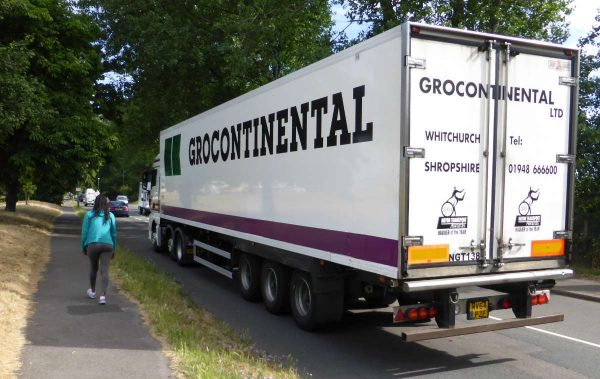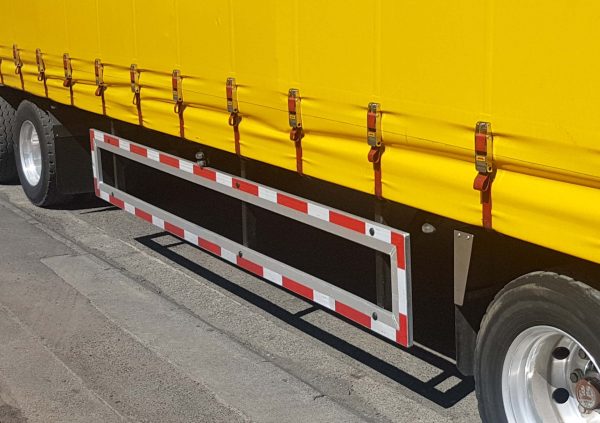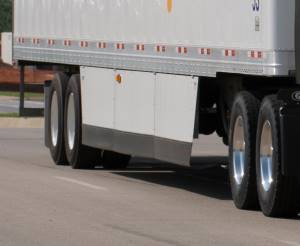Lorry bodies sit high off the ground and this means that vulnerable road users such as pedestrians, motorcyclists and cyclists can more easily fall under the rear wheels of a trailer or lorry if they hit or are hit by the vehicle.
These kinds of accidents are frequently fatal as the rear wheels run over the person. Side guards, also called lateral protection devices and side underrun protection, are designed to deflect these road users away from the lorry or trailer.
There is a standard that must be adhered to (UN ECE R73) which defines dimensions, strength, types of materials and more. Toolboxes and fuel tanks can form part of this protection for ‘unprotected road users’ with the remaining space between axles being filled by guardrails.




Front and rear underrun helps prevent more serious injuries in nose-to-tail incidents. A typical trailer or truck has its structure higher off the ground than is optimal for a car’s crash protection systems (i.e. crumple zones); a car will hit it with the bonnet, the suspension is compressed and the rear of the trailer slices through the windscreen and A pillars.
The same applies for a lorry running into the back of a vehicle in front: front underrun ensures that the force is transmitted through the vehicle’s structure rather than the cab riding up over the boot and through the rear window.
Side guards can provide some aerodynamic assistance when they are solid rather than bars.

Another benefit of side guards is their ability to provide early warning when turning of an obstacle that might ordinarily go under the rear wheels and damage tyres or suspension, or for the guards to push that object out of the way.
DVSA has guidance of where side guards may need to be fitted to your lorry or trailer.
